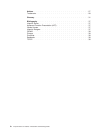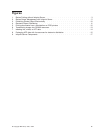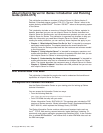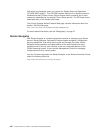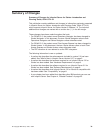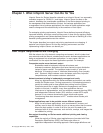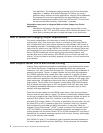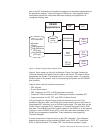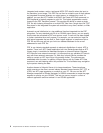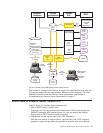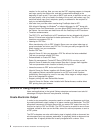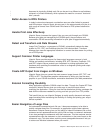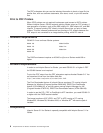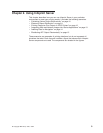
form definitions. This separates page formatting from the line-of-business
application. In addition, with Infoprint Designer for iSeries, you have a
graphical design interface for these applications. Infoprint Server addresses
the requirement to take print applications with page definition and form
definition formatting and transform them into final-form AFP. This lets them
be easily printed and viewed by ″downstream″ processes.
Workstation users want to integrate Web and client images into iSeries
applications
Workstation users want to be able to use images from the Web or their
workstation in GIF, TIFF, and JPEG format in their OS/400 documents. This
saves time by allowing the user to create the image in only one format.
How to Handle the Changing Output Requirements
Print server consolidation is the best way to handle the changing printing
requirements. Why? One central print server in a network is more cost effective
than a distributed solution with printers attached to many different LAN servers or
local desktop computers. Consolidating onto a central print server lets you use the
right printer for specific print jobs. OS/400 5.1 and higher with Infoprint Server lets
you consolidate your print workload from many servers to a central OS/400 print
server. OS/400 handles high volume printing, logs accounting histories, and
provides data security and recovery. With OS/400, you can control host and LAN
printing. You do not need to continually upgrade your server so it can handle more
print requests.
How Infoprint Server Fits in with OS/400 Printing
Infoprint Server significantly expands the possibilities of print and electronic output
in an iSeries environment, integrating new capabilities within the existing print
framework. Let’s take a closer look and see how. The existing output subsystem is
generally print-centric. Figure 1 on page 3 depicts the flow within this subsystem.
Any OS/400 application that creates print uses a printer file to provide job-level
control information as the data is written to the output queue. DDS keywords can be
used to define how application and static information is placed on each page. With
these instructions, the application places print data (a spooled file) on an OS/400
output queue. The print data on the queue is usually either SCS (SNA Character
Set) for simple line-mode output or AFP with graphics. With AFP print data, there
are frequently embedded references to external print resources, such as fonts,
overlays, and page segments.
Once the print data resides on the OS/400 output queue, there are three drivers
that can route the print data to a printer. The driver is automatically selected based
on the type of target printer. Base OS/400 print management includes the driver for
printing to SCS printers. Host Print Transform is the driver for ASCII printers,
principally PCL printers. When a PCL printer is selected by the print writer, the print
file (either SCS or AFP) is passed to Host Print Transform. Host Print Transform
then transforms the print data into ASCII and sends it to the printer. When an
Intelligent Printer Data Stream
™
(IPDS
™
) printer is started, Print Services Facility
™
(PSF) for OS/400 is automatically invoked and interactively manages the entire
printing process with the printer. When PSF for OS/400 manages AFP print data, it
ensures that any external resources required, such as fonts, overlays, and images,
are in printer memory when needed.
With OS/400 3.2 and 3.7, two additional types of external resources appeared on
the scene: page definitions and form definitions. These resources are a standard
2 Infoprint Server for iSeries: Introduction and Planning Guide
|
|
|
|
|
|
|
|
|
|



